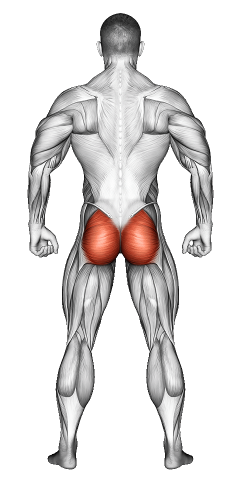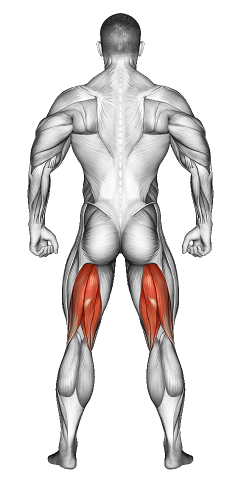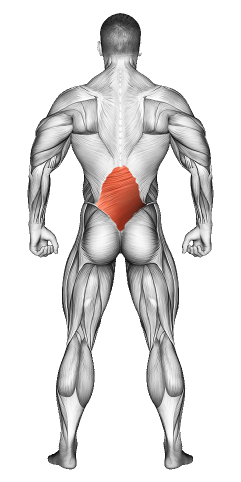Reverse Hyperextension: Video Tutorial & Exercise Guide

Written By: Claude Michael
Updated: Oct 13, 2024
| Workout | Reverse Hyperextension |
| Primary Muscle Group | Glutes |
| Secondary Muscle Group | Hamstrings, Lower Back |
| Equipment Required | Hyperextension Bench |
| Force Type | Hinge |
| Mechanics | Isolation |
| Exercise Type | Strength |
| Difficulty | Intermediate |
Reverse Hyperextension: Video Tutorial & Exercise Guide
- 1.Reverse Hyperextension: Muscle Groups
- -1.1Primary Muscle Group
- -1.2Secondary Muscle Group
- 2.Reverse Hyperextension: Step-by-Step Guide
- 3.Reverse Hyperextension: Overview
- 4.Reverse Hyperextension: Benefits
- 5.Reverse Hyperextension: Pro Tips & Advanced Techniques
- 6.Reverse Hyperextension: Progression Plan
- 7.Reverse Hyperextension: Frequently Asked Questions (FAQs)
Secondary Muscles Group
Reverse Hyperextensions: Step-by-Step Guide
- Step 1: Begin by lying face down on a reverse hyperextension machine or a flat bench. Your hips should be positioned just off the edge, with your legs hanging down.
- Step 2: Hold onto the handles or the edge of the bench to keep your upper body stable.
- Step 3: Engage your core and glutes, then lift your legs up behind you until they are in line with your body. Squeeze your glutes at the top of the movement.
- Step 4: Slowly lower your legs back down, keeping the motion controlled to prevent swinging.
- Step 5: Repeat for the desired number of reps, ensuring you maintain a steady pace and focus on squeezing your glutes and lower back muscles.
Reverse Hyperextension: Overview
The Reverse Hyperextension is an excellent exercise for strengthening the posterior chain, particularly the glutes, hamstrings, and lower back. It’s performed on a specific reverse hyper machine or can be done on a flat bench. This movement is beneficial not just for building muscle but also for improving lower back health and stability.
Reverse Hyperextensions: Benefits
Reverse Hyperextensions are a powerful tool for strengthening the glutes and lower back without putting stress on the spine. This makes it a great exercise for injury prevention and rehabilitation. Regularly performing this exercise can help improve hip mobility, strengthen the hamstrings, and protect the lower back during heavier lifts like squats and deadlifts.
Reverse Hyperextensions: Pro Tips & Advanced Techniques
To get the most out of Reverse Hyperextensions, focus on slow, controlled movements. Avoid using momentum to lift your legs. Keep your core engaged to stabilize your torso and focus on squeezing your glutes at the top of each rep. If you're looking to increase the intensity, you can add ankle weights or use the machine's loading feature.
Reverse Hyperextensions: Progression Plan
Beginner
Intermediate
Advanced
Reverse Hyperextension: Frequently Asked Questions (FAQs)
What muscles do Reverse Hyperextensions target?
+Reverse Hyperextensions primarily target the glutes, hamstrings, and lower back. They also engage the core for stability during the movement.
Can I do Reverse Hyperextensions without a machine?
+Yes! You can perform Reverse Hyperextensions on a flat bench if a machine isn’t available. Just make sure to keep your movements controlled and avoid swinging your legs.
How do I avoid lower back strain during Reverse Hyperextensions?
+Keep your core engaged throughout the movement to support your lower back. Focus on controlled, deliberate leg lifts rather than using momentum.
How often should I include Reverse Hyperextensions in my routine?
+Include them 1-2 times a week in your lower body or posterior chain workouts for the best results.
What are common mistakes to avoid during Reverse Hyperextensions?
+Avoid swinging your legs too quickly or using momentum. Instead, focus on controlled lifts, and don’t over-extend your lower back at the top of the movement.
Share
Don’t Wish for It, Work for It – Join the FlexXP Newsletter Today!
Thank you for signing up for the FlexXP Newsletter!
This site is protected and the Google Privacy Policy and Terms of Service apply.


